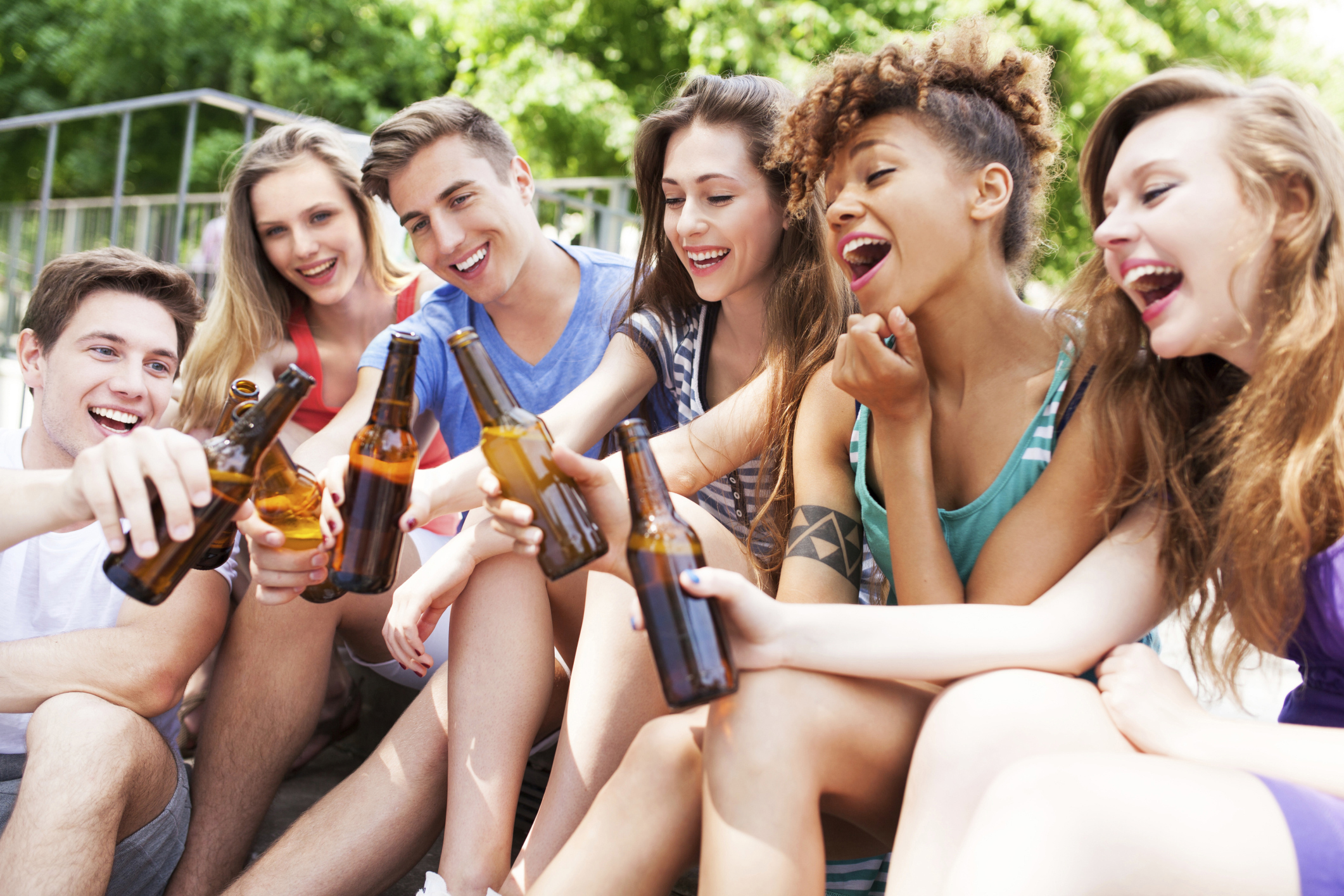Many of us had our first taste of underage alcohol at home but, as Nel Staveley finds out, some parents are taking it a little too far
It might sound a little unlikely, but astonishingly, according to a Poll by charity Drinkaware, nearly a quarter of parents admitted to supplying their own children with up to nine units of alcohol in one sitting.
That’s the equivalent of four cans of beer, a bottle of wine or a third of a bottle of vodka.
They do caveat it with the fact it’s only for ‘special occasions’ – for instance during holidays (60%), or for a party (48%) – and not an everyday occurrence.
But still. Giving your under-18 child a level of booze that’d leave even most hardened adults a bit woozy – is that a good idea?
Of course, some people – the ‘they do it on the continent’ crowd – argue it is.
They say the fact many Europeans are more relaxed about teenagers and alcohol, incorporating wine with family meals from a young age, rather than banishing it as off-limits (and therefore making teens, in the midst of their hormone-ravaged rebellion, want it even more) is the most sensible course of action.
And in some ways, they have a point.
In 2010, Brits had the dubious honour of being named ‘binge-drinking capital of Europe’ in the ‘all ages’ category. Then last year, in the ‘Teenage Girls binge-drinking’ category, we were second highest in the whole developed world (only Denmark was higher) – double the number of teenage girls in the UK had been drunk, compared to those in France, Holland or Italy.
So yes, here on our shores, we have clearly got something wrong.
But plying our youth with a bottle of wine is not going to make it right.
For one, it will damage their health, both now and in the future.
As a starting point; the liver.
“You might think that only lifelong alcoholics get liver disease, but regularly drinking too much can increase a young person’s chances of damaging their liver,” says Drinkaware.
So much so, that earlier this year, a newspaper investigation revealed two 17-year-olds, an 18-year-old and two 19-year-olds had been treated for alcohol-related liver disease in UK hospitals over the last three years.
Then there’s the impact on their underdeveloped brains. Drinking during this time can impact on memory, reactions and attention span, according to Drinkaware. And then there’s the snowball effect of what those lapsed memories and reactions can lead to.
You’ve got underage sex/possibly unwanted pregnancy; loss of safety awareness (over a third – 34% – of 16 and 17-year-olds have walked home alone at night when drunk) and basic drunken idiocy – from 2010/11-2012/13, more than 15,000 under-18s were admitted to hospital because of alcohol (think stomach-pumping and injuries).
The psychological effect of drinking young is just as concerning.
For all the ‘European theory’ flag-wavers, there’s the solid scientific research that’s shown the earlier a child starts drinking, the higher their chances of developing alcohol abuse or dependence in their teenage years and adult life – in fact, children who drink before the age of 15 are most susceptible to alcohol misuse in later life.
Of course, you’re the parent, and it’s up to you what and when and how much alcohol you give to your underage child (within reason*).
Just remember the risks.
And perhaps, most importantly, remember what you were like as a teenager making your own first forays into alcohol – chances are, the results weren’t spectacular. And chances are, you might want to save your child from the same.
(*It’s legal for children between the age of five and 18 to drink alcohol at home or other private premises, but not for under fives).
WHAT THE EXPERTS SAY:
Elaine Hindal, chief executive of Drinkaware (www.drinkaware.co.uk): “The average amount some parents are providing is equivalent to a whole bottle of wine, and that is more than enough to get a 15-year-old drunk.
No parent wants to think of their child out on their own being drunk and vulnerable, but effectively, that is what we could be facilitating by giving alcohol as a reward. It is illegal for parents to purchase alcohol on behalf of someone under 18. Worse still, it normalises a culture of excessive drinking among young people.”
Paula Lavis, co-ordinator policy and campaigns, Children and Young People’s Mental Health Coalition: “There is good scientific evidence to suggest that young people under 15 should not drink alcohol. And young people aged 15-17 should drink infrequently and no more than once a week.
This is because young people are still developing both in terms of their body and their brain, and alcohol can have a negative impact on this. A previous chief medical officer for England produced guidance which said that ‘an alcohol free childhood is the healthiest and best option.”
Dr Amanda Gummer, psychologist and specialist in children and their developmental issues (www.fundamentallychildren.com): “Binge drinking is largely the effect of the forbidden fruit approach. If it’s forbidden and children don’t understand why, they are likely to want to test it for themselves.
And because they’ll be going behind their parents’ backs, there will be no control/moderation and binge drinking is more likely.
“Giving teenagers a gradual introduction to alcohol as part of family life removes the appeal of the forbidden – but too much, too often can lead to habitual, rather than binge drinking, which in the longer term, can be very damaging.
“The most important thing parents can do is talk to their teens about drinking.”
Wendy Evans of Family Lives (www.familylives.org.uk): “Children living within a family that has a history of problem drinking are at increased risk of developing substance misuse problems themselves. This is a cycle that Family Lives and other support organisations are keen to break.”
